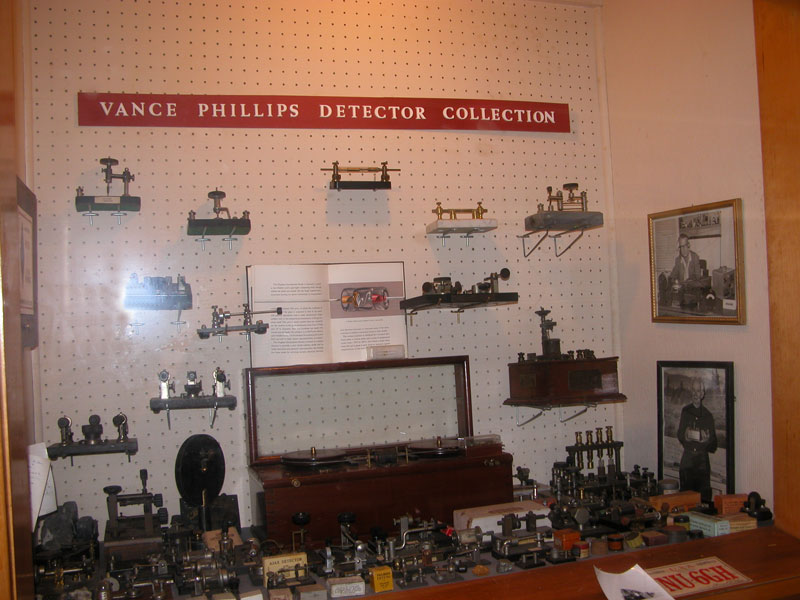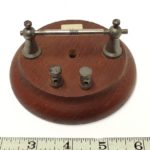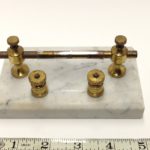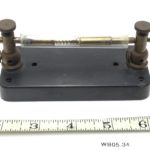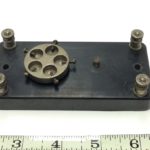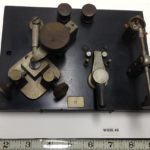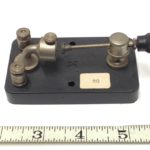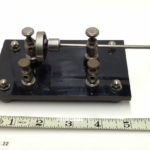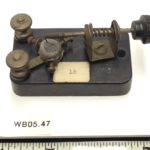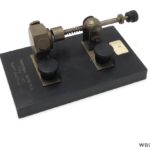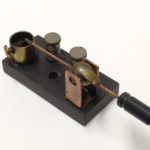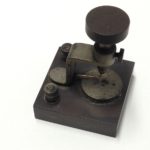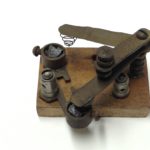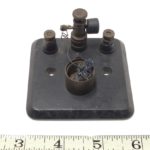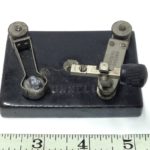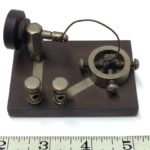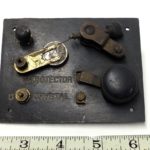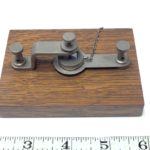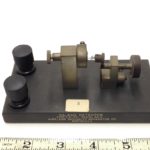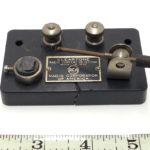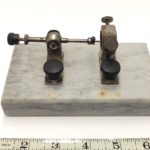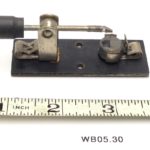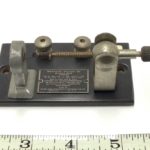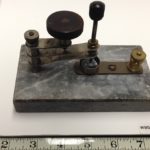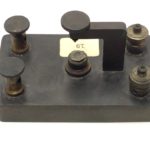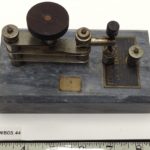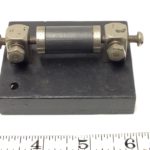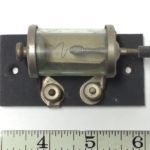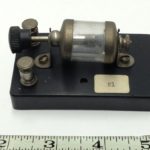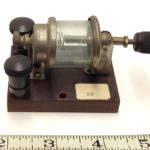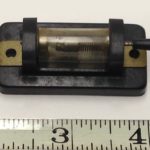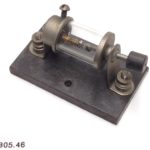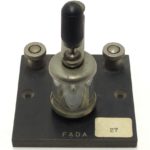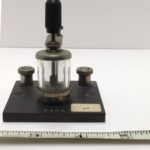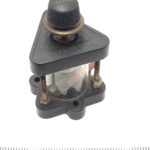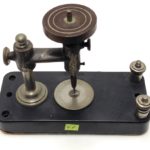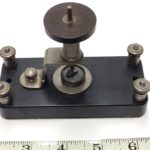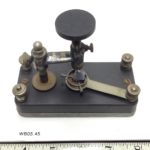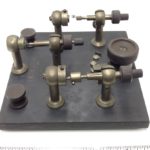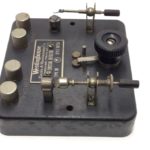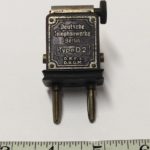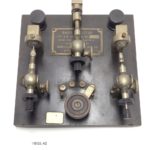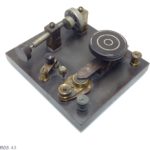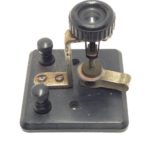De Forest retired to Los Angeles, which was not very far from where Vance lived. Vance looked him up and had him come up to his place, and that’s a picture of de Forest in his late years visiting at Vance Phillips’s place.
Detector Collection
Now, this is the range of detectors going all the way from coherers…you see coherers up there at the top…Marconi started off with coherers.
Fred – “Are these powder…”
Iron-powder coats.
There’s a little glass tube…there are lots of different varieties. The rest of these are different kinds of crystal detectors.
Fred – “Would they detect a particular frequency or just anything?”
Well, they were broadband…it didn’t matter what frequency, but they didn’t go very high in frequency.
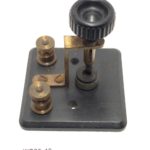
And they had liquid detectors. They would dip a so-called Wollaston Wire in the little carbon crater of acid, usually nitric acid, and that made a detector, too.
Fred – “That’s the equipment on that box?”
Yes, that’s a liquid detector.
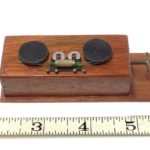
An English physicist discovered the principle of the detector with the moving wire. The soft iron wire belt is around those two wheels, which are driven by clockwork, and it travels through the coil that has the radio signal in it. And the horseshoe magnets magnetize the wire…the wire is soft iron…it detects the radio signal. The antenna goes into one end of one coil and grounds the other, and the second coil in that little spool is the secondary coil, which connects to the earphone for the listening person.
And, that little thing about two-and-one-half inches long, on the right corner, is simply a miniature moving wire detector that somebody made.
Locally, there is an amusing incident to me, because this is the museum of wireless and steam, and the George Corliss Steam Engine Company was in pretty hard shape at the beginning of this century, in fact, they were essentially out of business…nobody was buying steam engines anymore…at least of the Corliss type…and so they tried to diversify into the radio business, and they changed the name of the company to the American-British Company, and experimented with wireless. And according to the father of one of our early volunteers here, the American British Company hired Tesla to come up here and experiment on radio, and that hunk of galena back in the corner…there’s a picture of it here…supposedly was acquired by Tesla to carry on his experimentation.
Fred – “Were they successful?”
No, the American British failed very quickly.
Text from the transcript of a tour of New England Wireless & Steam Museum’s Wireless Building given by Robert W. Merriam on a winter day in 2012. Transcription by Craig H. Moody, K1CHM. Edited by Fred Jaggi.
